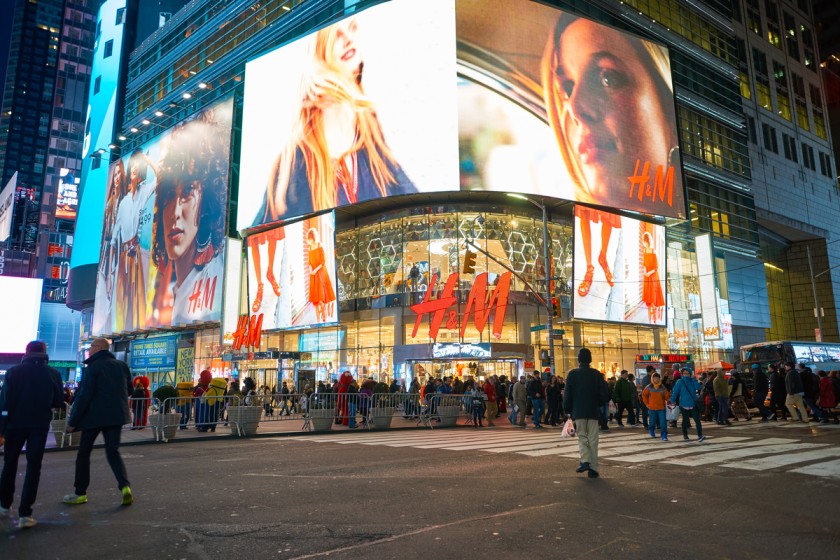A Case Study On How H&M Started Their Store On Metaverse



Hennes & Mauritz AB (H&M) is a worldwide apparel manufacturer based in Stockholm, Sweden. It is well-known for its fast fashion worn by men, women, adolescents, and children. It is the world's second-largest clothes store, after Spain-based Inditex, which is the parent company of Zara. The company offers an online shopping experience in almost 33 countries. Since the first Hennes store debuted in the Swedish city of Västers in 1947, the H&M Group has grown to reach fashion enthusiasts all over the world. Thanks to the H&M metaverse, the world has access to exciting and sustainable fashion and designs.
History

- Erling Persson launched a new womenswear business in Västers, Sweden, in 1947. In 1952, the first store was opened in Stockholm, Sweden's capital. Hennes purchased Mauritz Widforss, a Stockholm-based supplier of hunting apparel and fishing equipment, in 1968, and the company was renamed Hennes & Mauritz. This marked the beginning of H&M's offering of men's and children's clothing, eventually leading to the company's offering of clothing for the complete family.
- Hennes & Mauritz expanded quickly with 42 outlets by 1969 in countries like Norway, followed by Denmark, the United Kingdom, and Switzerland. Hennes & Mauritz began marketing undergarments in 1973. The rate of expansion accelerated even more, with five or six new stores opening each year.
- Large city billboards replaced traditional newspaper advertising in the 1990s. H&M has evolved into a global brand, as evidenced by the model selection. Supermodels appear alongside well-known celebrities and artists dressed in H&M clothing. The style is self-evident.
- In 1990, supermodel Elle Macpherson starred in the iconic yearly Christmas underwear campaigns. The fashion campaigns got a lot of media attention and coverage. Throughout the 1990s, H&M's ads included models from "The Big Six": Elle Macpherson, Cindy Crawford, Naomi Campbell, Claudia Schiffer, Christy Turlington, and Linda Evangelista. H&M began offering online shopping in 1998, with Sweden as the first online market.
- It started selling home goods in 2008. H&M Home is currently available in stores all over the world, having first been supplied through the company's online catalog. In 2009 and 2010, after expanding into Asia and the Middle East and opening concept stores like COS, Weekday, Monki, and Cheap Monday, branding consultancy Interbrand placed the company as the twenty-first most valuable worldwide brand, making it the highest-ranking retailer in the poll.
- In September 2013, the company established its 3,000th store in Chengdu, China. H&M stated in October 2020 that they would lose 5% of their global stores in 2021 as a result of the Covid pandemic.
H&M Metaverse

H&M has entered the metaverse by opening the 'CEEK City' virtual store, which seeks to provide customers with a three-dimensional shopping experience. Customers may navigate through the new CEEK City environment, choose the things they want, and make a purchase - all in the metaverse, a 3D virtual reality world that is analogous to the physical world.
Consumers will be able to buy apparel and accessories with CEEK cash, but they will only be able to wear them in a digital setting. According to H&M, the apparel accessible in the metaverse will be available in actual stores later. H&M has become the first retail clothing store in the metaverse with the opening of a store. The garment company will be able to offer its customers a 3D buying experience in its virtual store. H&M has pushed open one of the many doors and windows created by technologyH&M is known for producing high-quality, low-cost clothing that is also environmentally responsible. They have now opened their first shop in the metaverse, marking yet another milestone.
Customers will be able to walk about the virtual store in the metaverse, look at the things, choose one they want, and buy it in CEEK city. CEEK city is a three-dimensional digital world that resembles our real-world surroundings. These CEEK city-purchased garments can only be worn in the digital realm, not anywhere else. With CEEK, a metaverse currency effort, artists, athletes, and other digital content creators can engage directly with their audiences in virtual worlds. Even if they have gone through numerous prior digital reality settings in the metaverse, people can genuinely possess digital things through CEEK's NFT marketplace.
Conclusion
According to Hitesh Malviya, Founder of Its blockchain, this is merely the beginning of a massive wave, with hundreds of companies expected to join the marketing rush into the metaverse shortly. Digital items saw phenomenal growth last year, and apparel companies will not miss a beat to participate in more revenue-generating opportunities. The fact that the H&M metaverse retailer is open 24 hours a day, seven days a week will undoubtedly have a positive impact on the top line and bottom line, not to mention the corporate. Find such fashion updates and more on Fashinza, your one-stop for all fashion-related businesses.



















